The tale of Hachiko, the loyal Akita dog, transcends cultural boundaries, touching hearts worldwide and cementing its place as a powerful symbol of devotion. While many are familiar with the cinematic adaptations, particularly the touching 2009 Hollywood film “Hachi: A Dog’s Tale” starring Richard Gere, the true story behind the Hachi movie is even more profound and deeply rooted in Japanese history. This article delves into the remarkable life of Hachiko, exploring the unwavering bond he shared with his owner and how his legacy continues to inspire generations, both on screen and in real life. If you’ve ever wondered about the incredible facts that inspired such a poignant film, then understanding the genuine connection that sparked the film with richard gere and a dog is essential.
Born on November 10, 1923, on a farm in Odate City, within Japan’s Akita prefecture, Hachiko was a purebred Akita dog. His journey to Tokyo began when Professor Hidesaburō Ueno, an agricultural science professor at The University of Tokyo, fulfilled his long-held wish for an Akita puppy. After a challenging 20-hour train ride, the young Hachiko arrived at Professor Ueno’s home on January 15, 1924, in a delicate state. Thankfully, Professor Ueno and his girlfriend, Yae, diligently nursed the puppy back to health over the following six months.
Professor Ueno lovingly named his new companion “Hachi,” which means “eight” in Japanese—a number considered highly auspicious. A deep and inseparable bond quickly formed between Hachi and his owner. Professor Ueno cherished Hachi like a son, and their connection became a remarkable example of the profound relationship between humans and their canine companions.
The Faithful Akita: Hachiko’s Early Life and Bond with Professor Ueno
Professor Hidesaburō Ueno had a long-standing desire to own a purebred Japanese Akita dog. His search for the perfect puppy led him to Odate City, where Hachiko was born on November 10, 1923. Hachiko’s parents were an Akita father named Oshinai and a mother named Goma. Professor Ueno purchased the puppy for ¥30, a considerable sum at the time, and Hachiko embarked on a challenging 20-hour train journey to Tokyo.
Upon his arrival at Professor Ueno’s residence on January 15, 1924, Hachiko was in such poor condition that he was initially believed to be deceased. However, with the dedicated care of Professor Ueno and his partner, Yae, Hachiko recovered and flourished into a robust puppy over the next half-year. Professor Ueno bestowed upon him the name Hachi, signifying the number eight, which holds great significance as a lucky number in Japanese culture. This period marked the beginning of an extraordinary friendship, with Professor Ueno treating Hachi with immense love and affection, a bond that would soon become legendary.
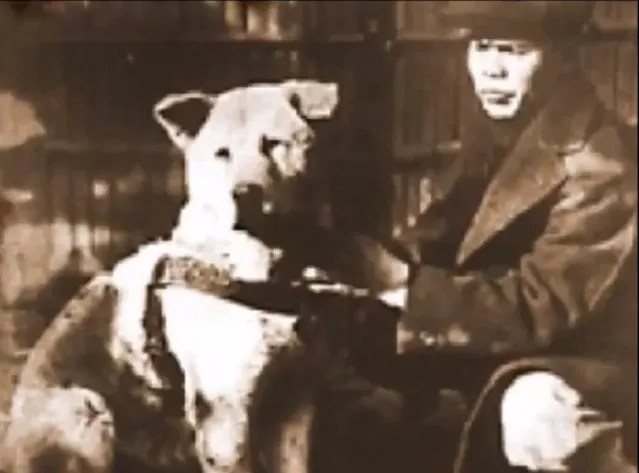 Hachiko and his best friend and owner, Professor Ueno
Hachiko and his best friend and owner, Professor Ueno
As Hachi matured, a daily ritual began. Each morning, he would accompany Professor Ueno to Shibuya Train Station in central Tokyo, seeing him off to work. In the afternoon, Hachi would faithfully return to the station, eagerly awaiting his beloved owner’s arrival from his workday. This routine became a testament to their deep connection, a pattern of devotion that would soon face a tragic disruption.
The Heartbreaking Separation: Hachiko’s Endless Wait at Shibuya Station
The daily routine of Hachi accompanying Professor Ueno to and from Shibuya Station became a cherished part of their lives. However, on May 21, 1925, just two years after Hachiko’s birth, the routine was shattered. Hachi, as always, sat patiently by the exit at Shibuya Station, anticipating his best friend’s return. Tragically, Professor Ueno never appeared. He had suffered a cerebral hemorrhage and died suddenly at work at the age of 53. Hachi had been with Professor Ueno for only one year and four months, a relatively short time that forged an unbreakable bond.
Following Professor Ueno’s death, Hachiko was taken in by Kozaburo Kobayashi, a former gardener for the Ueno family. Despite his new home, Hachi’s loyalty remained undeterred. For the next ten years of his life, every single afternoon, Hachiko would make his way to Shibuya Train Station. He would sit for hours at the ticket gate, precisely when Professor Ueno’s train was due, patiently searching for his master’s face among the returning commuters. The biography of Hachiko, penned by Professor Mayumi Itoh, vividly describes how “In the evening, Hachi stood on four legs at the ticket gate and looked at each passenger as if he were looking for someone.”
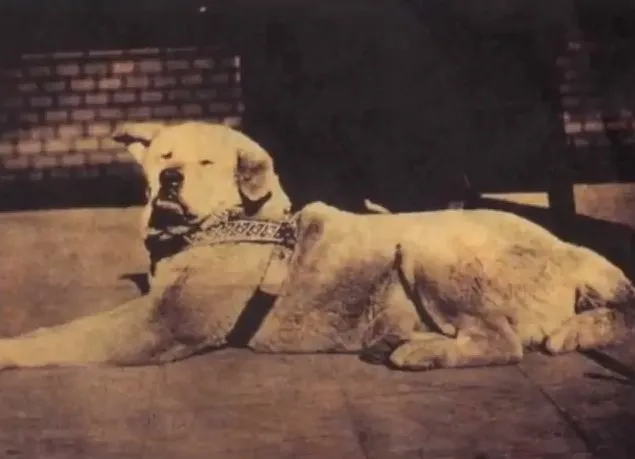 Hachiko patiently waiting at Shibuya Train Station, anticipating his owner's return
Hachiko patiently waiting at Shibuya Train Station, anticipating his owner's return
Hachi’s new residence in Tomigaya was conveniently close to Professor Ueno’s previous house, making his daily pilgrimage to Shibuya Station an easy walk. Initially, Hachiko faced adversity at the station. There are accounts of him being mistreated, beaten, and bullied by some pedestrians, station staff, and even children. This harsh treatment persisted until his story was published in a major Japanese newspaper, dramatically changing public perception and transforming him into a national sensation.
From Local Dog to National Icon: The Rise of Chuken-Hachiko
In 1932, a reporter for a prominent Japanese newspaper discovered Hachiko’s poignant story and brought it to national attention through publication. This pivotal moment transformed Hachiko from a solitary, faithful dog into a beloved celebrity across Japan. People affectionately began calling him “Chuken-Hachiko,” which translates to “Hachiko – the faithful dog.”
The narrative of this dog’s unwavering commitment resonated deeply within the national media, inspiring countless individuals from around the world to visit Shibuya Train Station, bringing treats and solace to Hachiko. His steadfast devotion profoundly touched the hearts of the Japanese people, and he quickly became a symbol of loyalty and perseverance. Hachiko continued his daily vigil outside Shibuya Station, waiting for his deceased friend and master, for an astonishing nine years, nine months, and 15 days. He died peacefully on March 8, 1935, at the age of 11. Even today, his enduring legacy stands as a powerful symbol of love, devotion, and unparalleled loyalty, continuing to captivate and inspire. The hachiko a dog’s story movie perfectly captures this incredible fidelity.
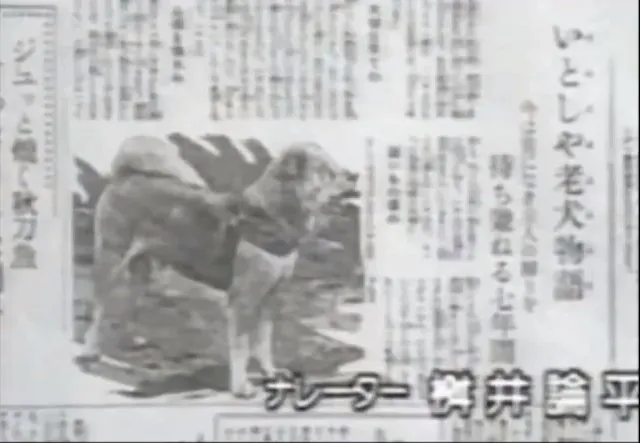 Hachiko featured prominently in a Japanese newspaper article
Hachiko featured prominently in a Japanese newspaper article
The Hachi Movie True Story: Bringing a Legend to the Big Screen
The incredible true story of Hachiko has captivated audiences globally, leading to several cinematic adaptations. The first film, “Hachiko Monogatari,” was produced in Japan in 1987, introducing the touching narrative to a wider domestic audience. However, it was the 2009 Hollywood rendition, “Hachi: A Dog’s Tale,” starring the acclaimed actor Richard Gere, that brought Hachiko’s story to international prominence. This American adaptation skillfully translated the profound bond between Hachiko and Professor Ueno into a universally relatable narrative of unwavering loyalty and love.
The filming of “Hachi: A Dog’s Tale” took place in Rhode Island, USA, where a replica statue of Hachiko now stands outside a train station, honoring the faithful dog and commemorating the movie’s production. This film not only highlighted the specific events of Hachiko’s life but also resonated with viewers on an emotional level, often prompting tears due to its powerful depiction of canine devotion. The success of the movie ensured that the movie hachi with richard gere became synonymous with the true story, making Hachiko’s legend known to millions who might not have otherwise encountered it. It served as a powerful reminder of the deep emotional connections possible between humans and their pets. The profound impact of the movie with richard gere hachi continues to draw new audiences to Hachiko’s remarkable journey.
Honoring a Legend: Hachiko Statues and Memorials Across Japan
Hachiko’s enduring legacy is commemorated through numerous statues and monuments throughout Tokyo and beyond, serving as poignant reminders of his unparalleled loyalty. These tributes allow both locals and visitors to reflect on his story and the universal themes it represents.
Shibuya Station Statue
The most iconic and frequently visited Hachiko statue is located directly in front of Shibuya Station in Tokyo. The original bronze statue, crafted by Japanese artist Teru Andō, was unveiled in 1934, with Hachiko himself present as the guest of honor. Unfortunately, this original statue was melted down for metal during World War II. The current statue, a faithful replica, was created in 1948 by Takeshi Ando, the son of the original artist. Today, it remains one of Tokyo’s major tourist attractions and a popular meeting spot, especially for young Japanese. Fittingly, one of Shibuya Station’s five exits is named “Hachikō-guchi,” or “The Hachikō Entrance/Exit.” Annually, on March 8th, the anniversary of Hachiko’s death, a memorial ceremony is held at Shibuya Station to honor Hachi and celebrate the virtues of love and loyalty. In 2023, a significant ceremony marked what would have been Hachiko’s 100th birthday.
Hachiko Mosaic – Shibuya Station
Adorning a wall within Shibuya Station, a large and beautifully intricate mosaic artwork titled “Hachiko Family” portrays Hachiko joyfully playing alongside his parents and siblings. Created by Japanese artist Ryutaro Kitahara, this mural was completed in March 1990. It is accompanied by a poem by Kitahara Ryutaro, which speaks to the station as “a place of hellos and goodbyes of happiness and sadness” and encourages people to “meet in front of the ‘Hachiko Family’ mural.”
Stuffed Hachiko – National Museum of Nature and Science, Tokyo
Hachiko passed away peacefully and alone near Shibuya train station on March 8, 1935, at the age of 11. As a testament to his immense symbolic importance in Japan, he was preserved through taxidermy. Today, visitors can see the stuffed Hachiko on display at the National Museum of Nature and Science in Ueno, Tokyo. This exhibit allows people to connect directly with the physical representation of the loyal dog whose story has inspired so many.
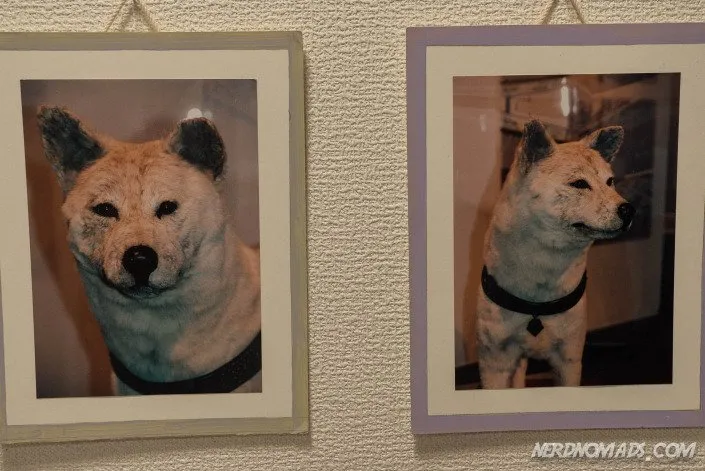 The preserved Hachiko on display at the National Museum of Nature and Science in Ueno, Tokyo
The preserved Hachiko on display at the National Museum of Nature and Science in Ueno, Tokyo
Hachiko & Professor Ueno Statue – University of Tokyo
At the University of Tokyo, a particularly moving bronze statue depicts a heartwarming reunion between Hachiko and his best friend, Professor Hidesaburō Ueno. This statue is especially significant as it stands at the very place where Professor Ueno worked and where he tragically died, leaving Hachiko to wait alone. Erected on March 9, 2015, on the 80th anniversary of Hachiko’s death, this statue by Japanese artist Tsutomo Ueda from Nagoya captures Hachiko joyfully leaping up to greet Ueno at the end of a workday. The scene is incredibly peaceful and offers a profound moment for reflection on loyalty, love, and devotion. Next to the statue, a small museum houses articles, photos of Hachiko, and even his autopsy report, which revealed he died of terminal cancer and a filaria infection. Intriguingly, four yakitori skewers were also found in his stomach, though they were not the cause of his death. The preserved liver, heart, and lung of Hachiko are also on display here, offering a unique, if solemn, insight into his physical being.
Hachiko Monument – Professor Ueno’s Grave
While Hachiko’s fur was preserved for the museum, his remains were cremated. His ashes were then respectfully buried next to his beloved friend and owner, Professor Ueno. Visitors can pay their respects at their shared resting place in Aoyama Cemetery in Minato, Tokyo, where a monument of Hachiko stands beside Professor Ueno’s tomb.
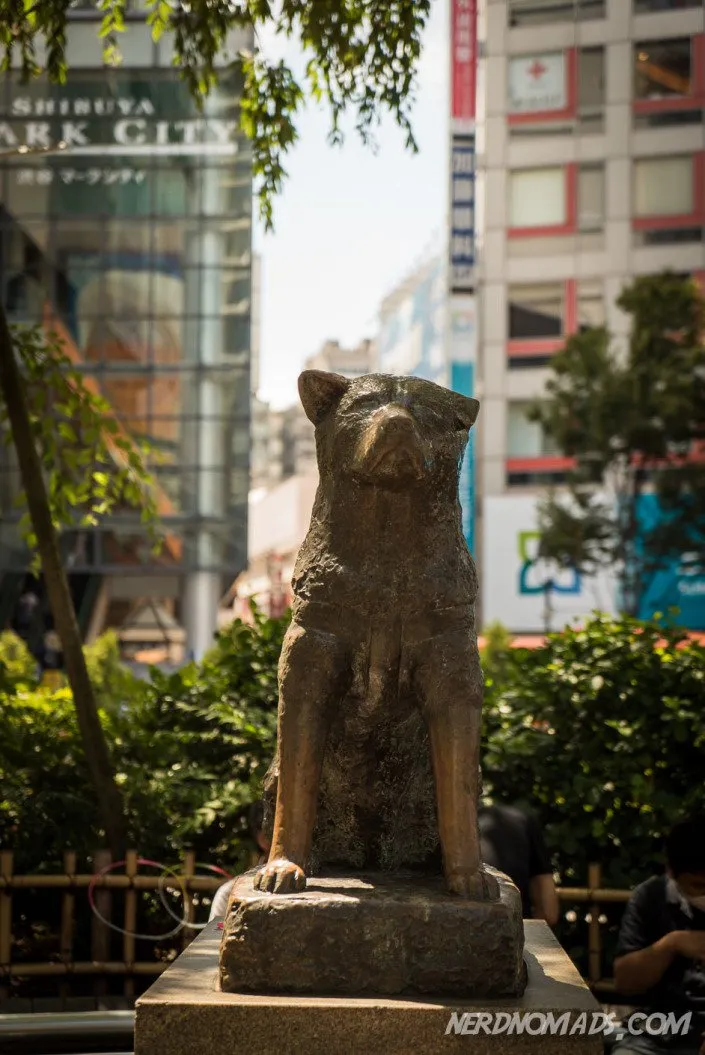 People gathered around the famous Hachiko bronze statue outside Shibuya Station in Tokyo
People gathered around the famous Hachiko bronze statue outside Shibuya Station in Tokyo
The Akita Dog Museum: A Tribute in Odate City
For those deeply interested in Hachiko and the Akita breed, a visit to the Akita Dog Museum in Odate City, Akita Prefecture, is a must. This museum serves as a dedicated tribute to the world’s most famous Akita dog, offering comprehensive insights into both Hachiko’s life and the characteristics of the Akita breed itself.
The museum provides a unique opportunity to learn everything about Akita dogs. On weekdays, visitors might even have the chance to meet and interact with two adorable Akita dogs, enhancing the immersive experience. Odate City is proudly recognized as the “capital city” of the Akita dog breed, and its streets are adorned with numerous Akita dog statues and symbols. For instance, a Hachiko statue graces the front of Odate Station, a Hachiko Shrine can be found on the train platform, and an Akita dog figure sits atop the postbox at City Hall. Even the city’s manhole covers feature charming Hachiko-related cartoon characters, encouraging visitors to observe their surroundings closely as they explore the city. The museum is open daily from mid-April to mid-November, operating between 9:00 AM and 4:00 PM. Its address is 13-1 Aza Sannomaru Ōdate City, Akita, Japan, and further information can be found on the Akita Hachiko Dog Museum webpage.
The Enduring Legacy of Hachiko’s Loyalty
Hachiko’s incredible story remains a potent reminder of the profound bonds that can exist between humans and animals. His unwavering ten-year vigil at Shibuya Station following his owner’s death transformed him into a timeless symbol of loyalty, devotion, and unconditional love. The hachi a dog’s tale real story continues to resonate globally, ensuring that Hachiko’s name is synonymous with fidelity.
The true story of Hachiko, magnificently brought to life in films like “Hachi: A Dog’s Tale,” has not only entertained but also educated millions about the extraordinary capacity for love and faithfulness found in dogs. His legend is celebrated through statues, museums, and annual ceremonies, keeping his memory alive and inspiring countless individuals to appreciate the deep connections we share with our pets. Hachiko’s legacy proves that true friendship and loyalty can indeed last a lifetime, and even beyond.
Hachiko’s profound impact as a symbol of loyalty, devotion, and love continues to inspire and move people across the globe. The powerful “Hachi Movie True Story” serves as a poignant reminder of the extraordinary bond between a dog and its owner. His unwavering spirit, beautifully portrayed in cinematic adaptations, ensures that his legend will live on, teaching us valuable lessons about fidelity and companionship. Explore more heartwarming dog stories on Dog Care Story to discover other incredible tales of canine devotion.
